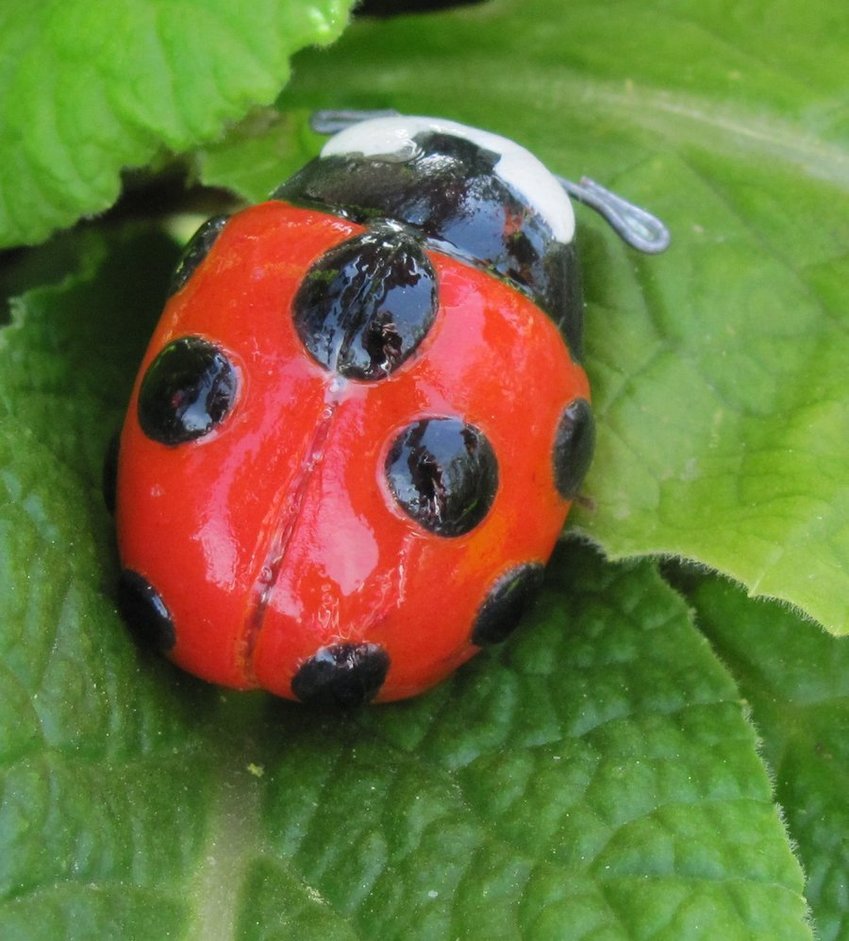It’s True! The Nine-Spotted Lady Bug is Still Not Extinct

The nine-spotted ladybug is alive and thriving at the Peconic Land Trust’s Quail Hill Farm in Amagansett after nearly three decades of its being designated “extinct.”
Last week, a team of Cornell Cooperative Extension scientists, as well as interested community members and animal enthusiasts, returned to the farm to see if the Coccinella novemnotata, the nine-spotted ladybug, had continued to occupy the established habitat. All were pleased to find that the insects were alive and well.
Leslie Allee, an entomologist for Cornell University and a member of the group the Lost Ladybug Project, was thrilled about the group’s findings.
“The find on Quail Hill Organic Farm is the first evidence of a thriving population of nine-spotted ladybugs anywhere in eastern North America. Finding them again this year after the initial find in 2011 gives us hope and an opportunity to study why they are thriving at Quail Hill,” Allee excitedly exclaimed in an email this week.
Last summer, a colony of these insects were found at the East End organic farm after not being located by scientists in the state for 29 years. Scientists attribute the native ladybug’s dramatic decline in population to decreased farmland and imported Asian ladybugs, which were imported for pest control.
Peter Prioto, who worked for Cornell Cooperative Extension a department of the upstate university, found the first of the rare insects on top of a sunflower during a ladybug search he had organized at Quail Hill. He believes to the species is there because of the farm’s organic practices. The nine-spotted ladybug has been continuously sought throughout the country, but the only other recent spotting of the species has been in Georgia back in 2007.
Allee agrees with Prioto’s hypothesis as to why the species has continued to survive and grow at the Amagansett farm.
“We believe that the nine-spotted ladybug population has been on the farm for a very long time and is a pocket of survival from the time over 30 years because of the farm’s natural practices,” writes Allee. “The farm has always provided a safe haven for this population to continue. Quail Hill has been in operation for many years and was protected land before that. The fact that Quail Hill is an organic farm where no pesticides are used may be one reason why these ladybugs are still in existence on the farm.”
The Lost Ladybug Project began back in 2000 when entomologists formed the group in an attempt to find the nine-spotted ladybug in New York, in addition to mapping where all the species of ladybugs are located in North America. They search areas and use photographs sent in by citizen scientists.
Although the nine-spotted ladybug is beautiful to look at, they are actually voracious predators that help control pest insects like aphids. This type of ladybug has it’s own particular life cycle, habitat, food preferences, and unique appearance, informs Allee.
“Each species of ladybug has a unique niche in the environment, its own job to do. Therefore the biodiversity of ladybug species is important, we want to have a diversity of ladybugs to have the best pest control possible, to have a more stable environment that can withstand changes,” said the entomologist.
Dan’s Paper’s own Dan Rattiner wrote about the ladybug back in January, and discussed a bill put forward in a session of the New York State Assembly in 2006 releasing the nine spotted from its exalted position—freeing the state to designate a new official bug. As Dan reported, the bill went to committee and never came out, thus the nine-spotted ladybug remained the official state bug.



